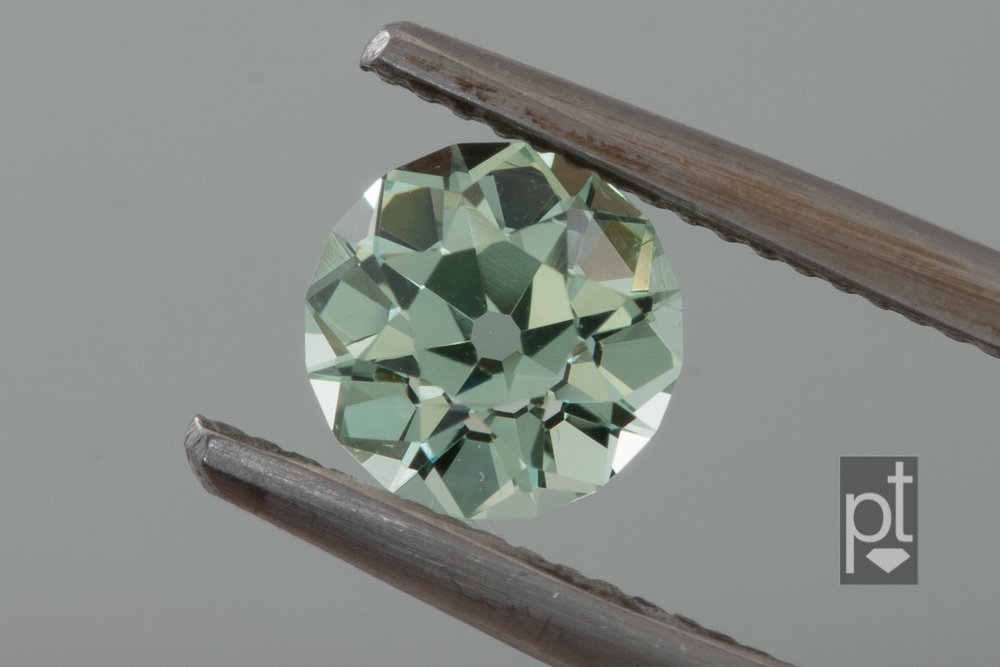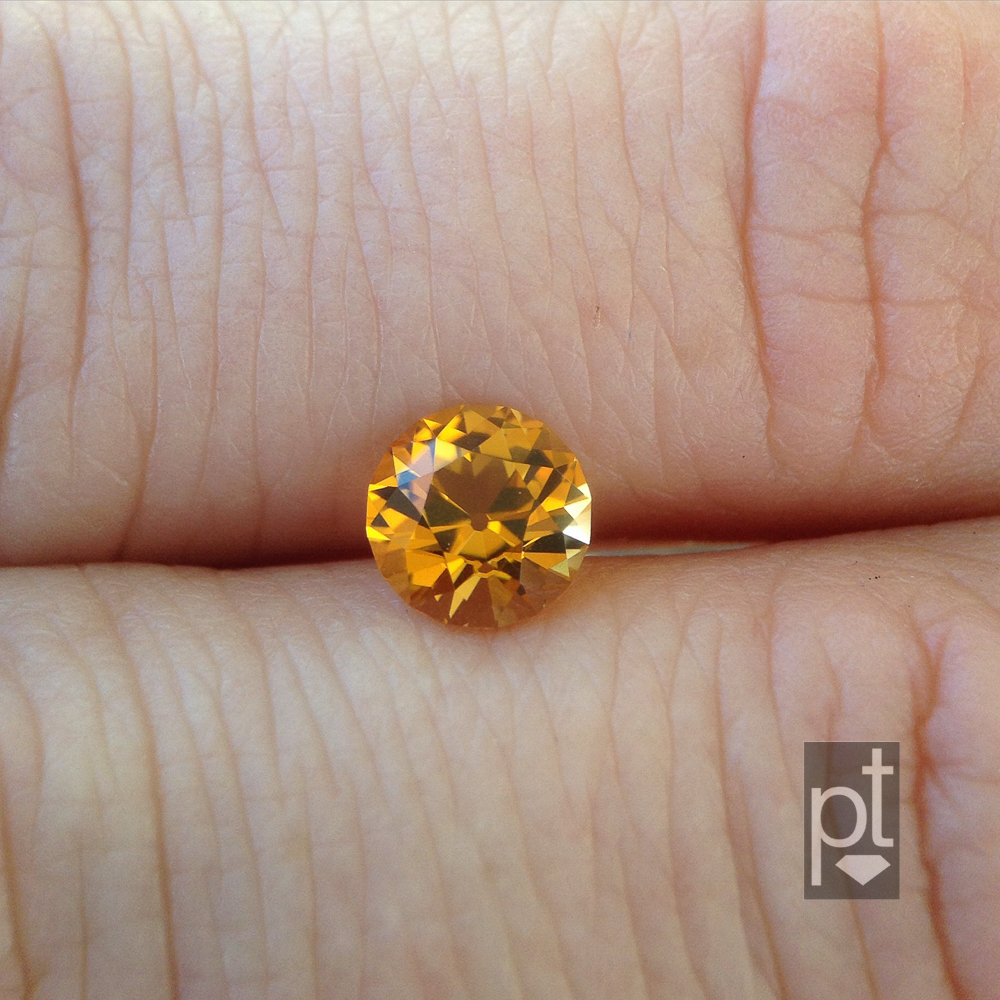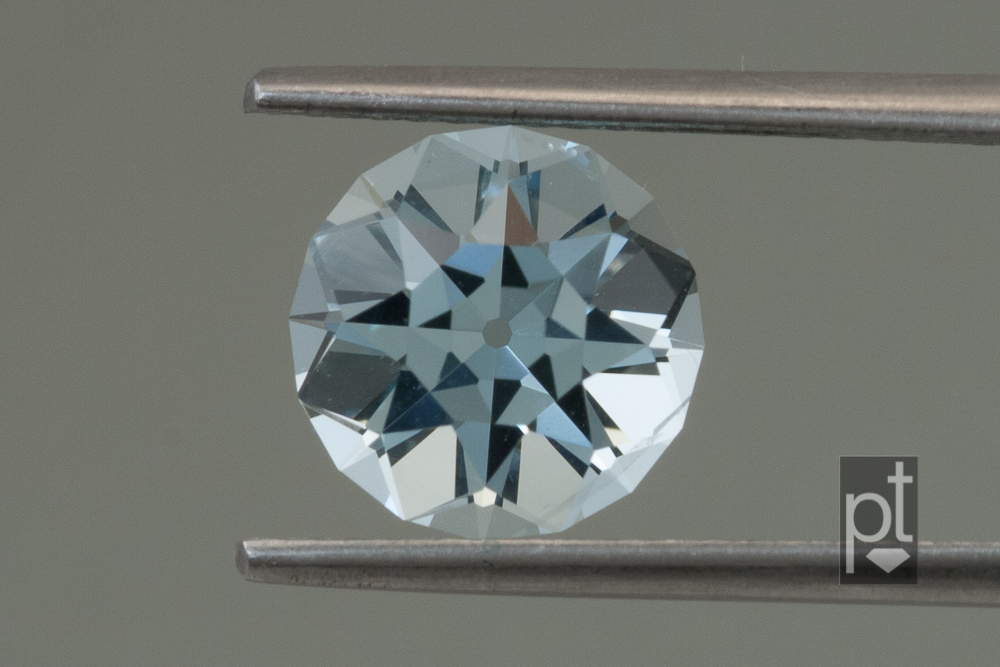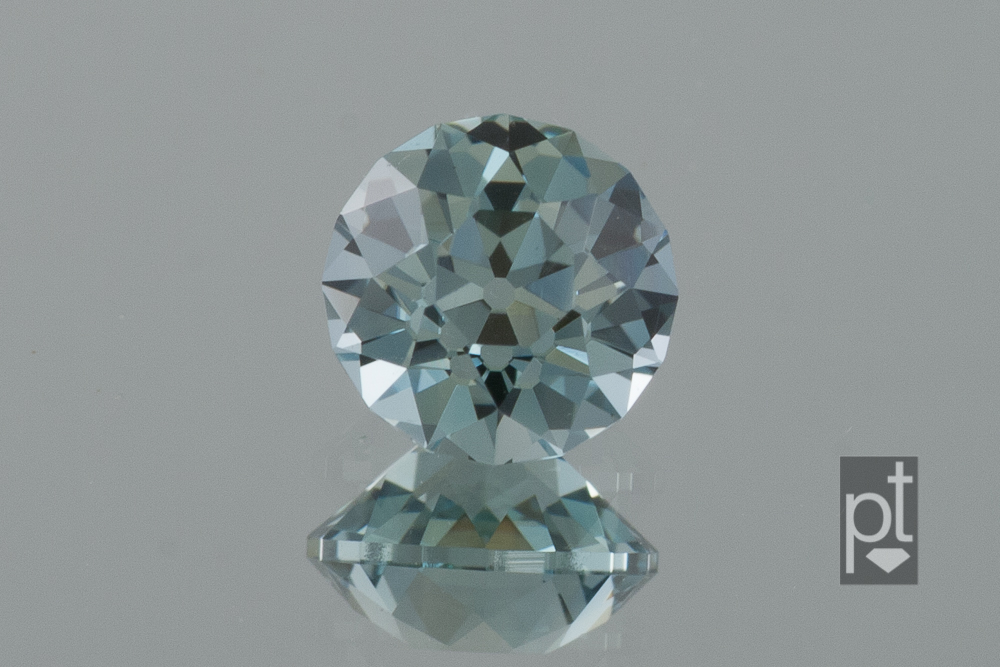As you may know, the Old European Cut (OEC) design was a 19th century evolution of earlier, simpler designed use for diamonds. Eventually the OEC was superseded by better performing designs, especially by what we now call the Standard Round Brilliant (SRB).
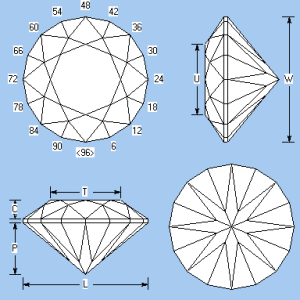
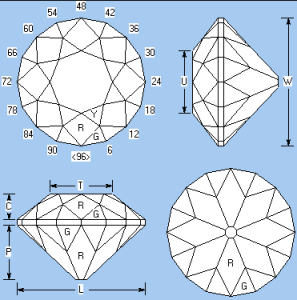
While it is completely true that the SRB optically out-performs the venerable OEC, the comparison fails to recognize that the OEC has a deep beauty of it’s own. No, an antique OEC will not throw around tiny sparkles of light around; an OEC will throw broader flashes of crisp light. It’s the difference between light on a rippling brook and light in a gently flowing stream — both are beautiful in their own splendid way.
A couple months back, I was commissioned to cut an 8mm OEC in aquamarine. Now, generally speaking, designs for diamond leverage the diamond’s high refractive index and dispersion to create a beautiful stone. Aquamarine has both a low refractive index and almost no dispersion. Cutting an SRB in aquamarine using angles designed for diamond would give a very weak looking stone. But one of the major distinguishing features of the OEC is it’s deeper pavilion and higher crown that is optically necessary for diamond. It turns out, those same, overly generous angles make it perfect for gemstones like aquamarine.
I originally took the aquamarine OEC project on as a one-off job for one of my jewelers, but have ended up cutting several of them in various gem species from aquamarine to Merelani mint garnet to Montana sapphire. The nearly original design hasn’t disappointed yet.
I’ve now made the OEC one of my standard designs and have been inspired to dig deeper into other antique designs.
What can I cut for you?
